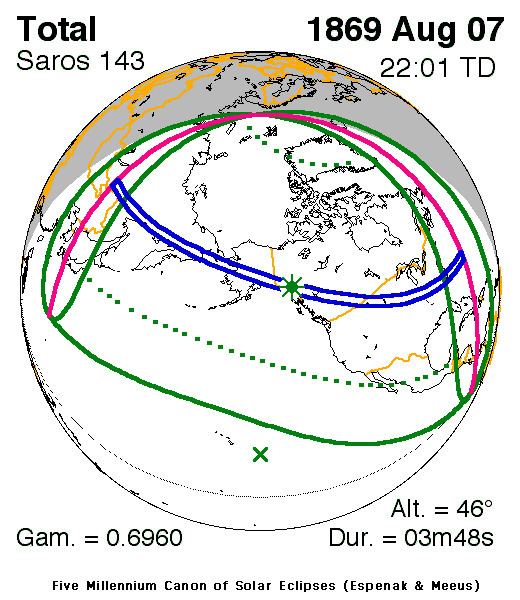Nature Total Magnitude 1.0551 Max. width of band 254 km (158 mi) Start date August 7, 1869 | Gamma 0.696 Duration 228 sec (3 m 48 s) Greatest eclipse 22:01:05 | |
 | ||
A total solar eclipse occurred on August 7, 1869. A solar eclipse occurs when the Moon passes between Earth and the Sun, thereby totally or partly obscuring the image of the Sun for a viewer on Earth. A total solar eclipse occurs when the Moon's apparent diameter is larger than the Sun's, blocking all direct sunlight, turning day into darkness. Totality occurs in a narrow path across Earth's surface, with the partial solar eclipse visible over a surrounding region thousands of kilometres wide. It path of totality was visible from eastern Russia, Alaska, across Canada, and the northeastern United States. A partial eclipse occurred across all of North America.
Contents
Observations
In 1869, astronomer and explorer George Davidson made a scientific trip to the Chilkat Valley of Alaska. He told the Chilkat Indians that he was especially anxious to observe a total eclipse of the sun that was predicted to occur the following day, August 7. This prediction was considered to have saved Davidson's expedition from an attack.
Related eclipses
It is a part of solar Saros 143.
